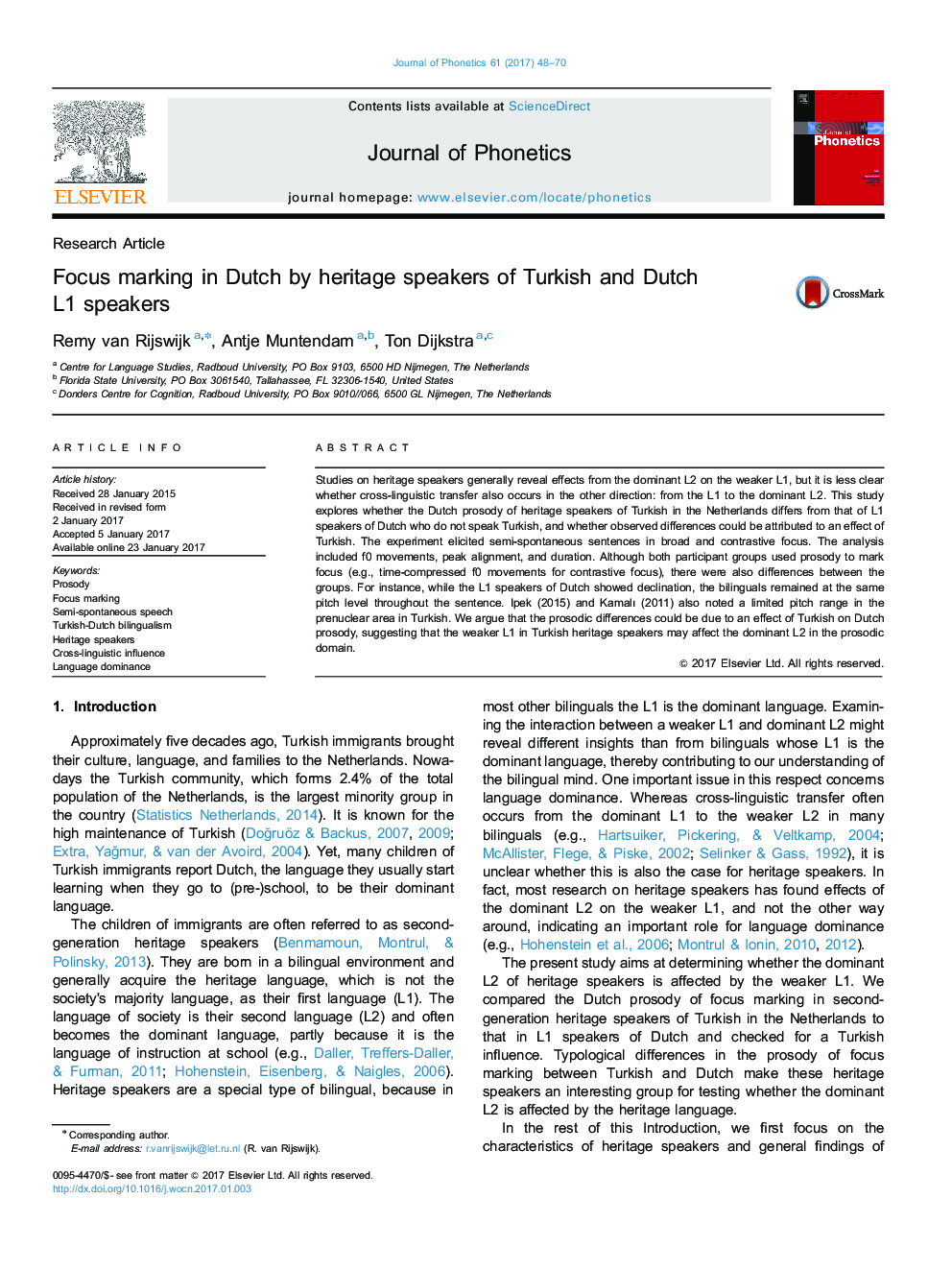| Article ID | Journal | Published Year | Pages | File Type |
|---|---|---|---|---|
| 5124099 | Journal of Phonetics | 2017 | 23 Pages |
â¢We studied the Dutch prosody of heritage speakers of Turkish and Dutch L1 speakers.â¢The experiment elicited semi-spontaneous sentences in broad and contrastive focus.â¢Heritage speakers showed peak range, f0, and duration differences from L1 speakers.â¢Some f0 differences between heritage speakers and L1 speakers were gender-specific.â¢We argue that the prosody of a weaker L1 (Turkish) affects the dominant L2 (Dutch).
Studies on heritage speakers generally reveal effects from the dominant L2 on the weaker L1, but it is less clear whether cross-linguistic transfer also occurs in the other direction: from the L1 to the dominant L2. This study explores whether the Dutch prosody of heritage speakers of Turkish in the Netherlands differs from that of L1 speakers of Dutch who do not speak Turkish, and whether observed differences could be attributed to an effect of Turkish. The experiment elicited semi-spontaneous sentences in broad and contrastive focus. The analysis included f0 movements, peak alignment, and duration. Although both participant groups used prosody to mark focus (e.g., time-compressed f0 movements for contrastive focus), there were also differences between the groups. For instance, while the L1 speakers of Dutch showed declination, the bilinguals remained at the same pitch level throughout the sentence. Ipek (2015) and Kamalı (2011) also noted a limited pitch range in the prenuclear area in Turkish. We argue that the prosodic differences could be due to an effect of Turkish on Dutch prosody, suggesting that the weaker L1 in Turkish heritage speakers may affect the dominant L2 in the prosodic domain.
